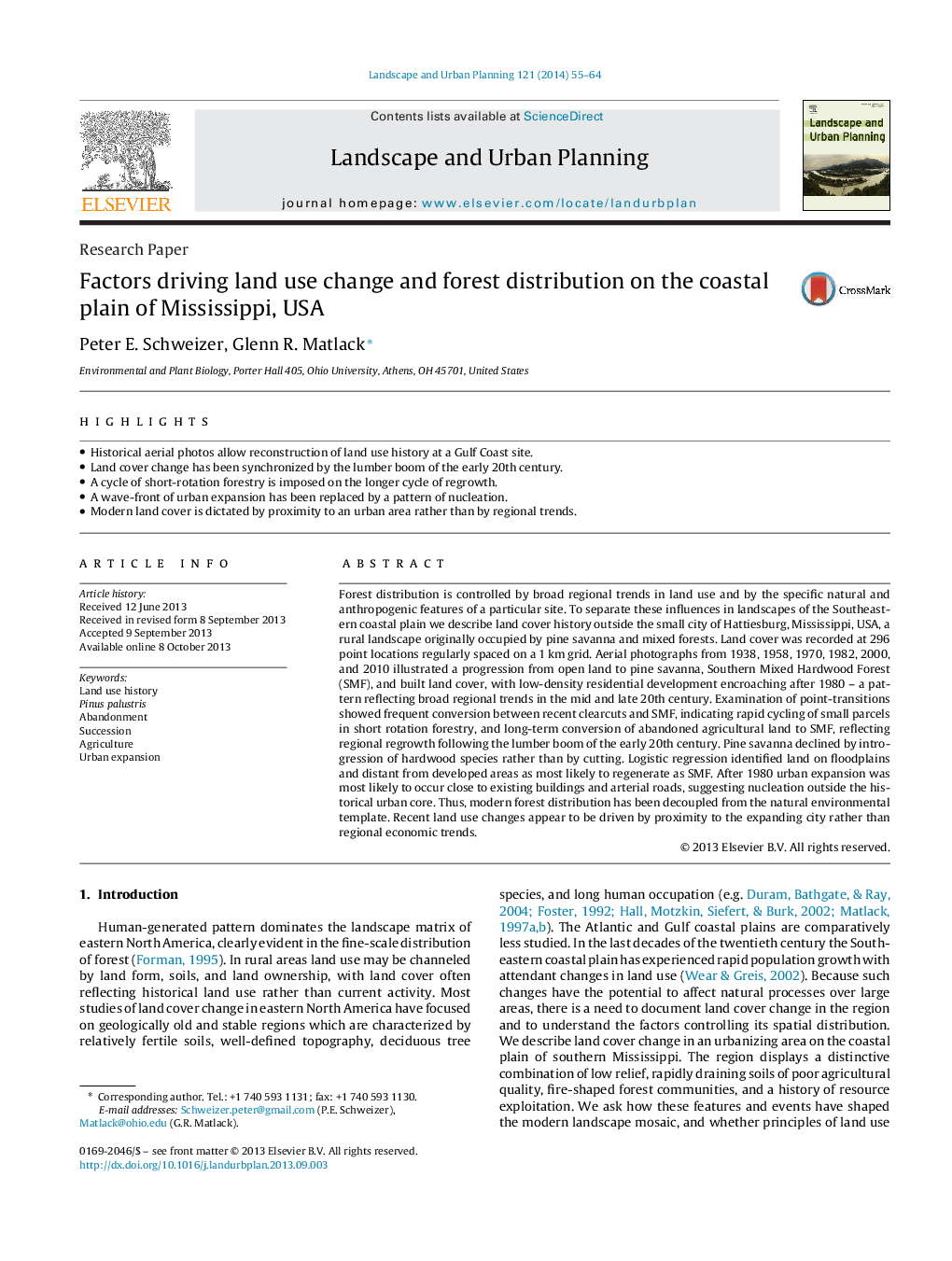| کد مقاله | کد نشریه | سال انتشار | مقاله انگلیسی | نسخه تمام متن |
|---|---|---|---|---|
| 1049244 | 1484637 | 2014 | 10 صفحه PDF | دانلود رایگان |
• Historical aerial photos allow reconstruction of land use history at a Gulf Coast site.
• Land cover change has been synchronized by the lumber boom of the early 20th century.
• A cycle of short-rotation forestry is imposed on the longer cycle of regrowth.
• A wave-front of urban expansion has been replaced by a pattern of nucleation.
• Modern land cover is dictated by proximity to an urban area rather than by regional trends.
Forest distribution is controlled by broad regional trends in land use and by the specific natural and anthropogenic features of a particular site. To separate these influences in landscapes of the Southeastern coastal plain we describe land cover history outside the small city of Hattiesburg, Mississippi, USA, a rural landscape originally occupied by pine savanna and mixed forests. Land cover was recorded at 296 point locations regularly spaced on a 1 km grid. Aerial photographs from 1938, 1958, 1970, 1982, 2000, and 2010 illustrated a progression from open land to pine savanna, Southern Mixed Hardwood Forest (SMF), and built land cover, with low-density residential development encroaching after 1980 – a pattern reflecting broad regional trends in the mid and late 20th century. Examination of point-transitions showed frequent conversion between recent clearcuts and SMF, indicating rapid cycling of small parcels in short rotation forestry, and long-term conversion of abandoned agricultural land to SMF, reflecting regional regrowth following the lumber boom of the early 20th century. Pine savanna declined by introgression of hardwood species rather than by cutting. Logistic regression identified land on floodplains and distant from developed areas as most likely to regenerate as SMF. After 1980 urban expansion was most likely to occur close to existing buildings and arterial roads, suggesting nucleation outside the historical urban core. Thus, modern forest distribution has been decoupled from the natural environmental template. Recent land use changes appear to be driven by proximity to the expanding city rather than regional economic trends.
Journal: Landscape and Urban Planning - Volume 121, January 2014, Pages 55–64
